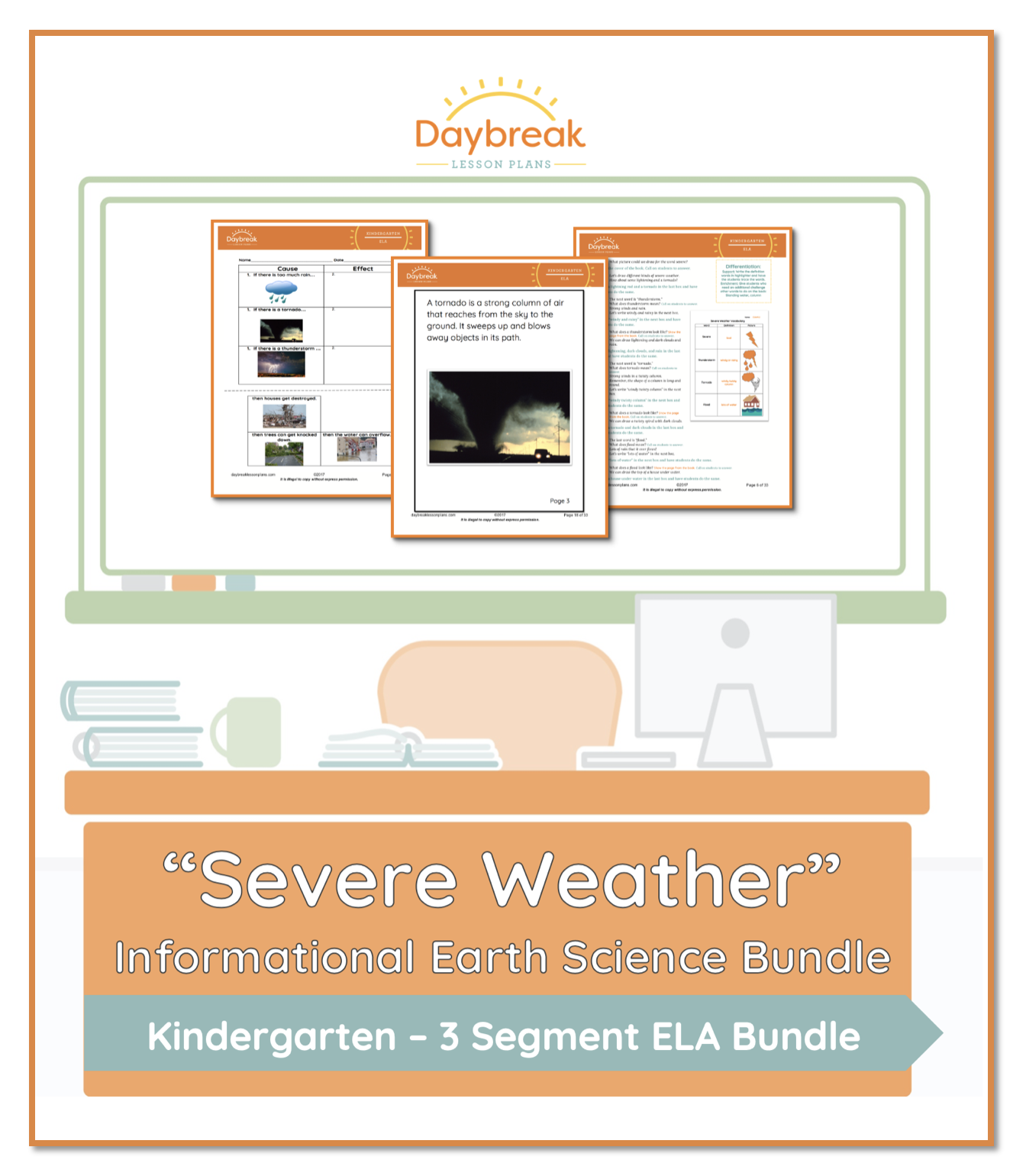“Severe Weather” Informational Earth Science Bundle
Kindergarten • Lesson Plan BundleQuick Facts
Subject: ELA, Informational
Type: Lesson Plan Bundle
Skills:
Materials Needed:
Printable Resources:
Required Printable Texts:
CCSS: RI.K.1, RI.K.2, RI.K.3, RI.K.4, RI.K.5, RI.K.6, & W.K.2
File Type: PDF Document
Lesson Plan Description
Fully scripted informational text lesson bundle (3 lessons) based on included text “Severe Weather”by Jennifer Kaul. Students will:
- Segment 1: Identify the title and author of the book, practice visualization by listening to the words and describing what they see in their heads, use context clues to define new vocabulary, define and draw pictures of new vocabulary, and ask and answer questions about the text.
- Segment 2: Discuss cause and effect on the topic of severe weather and destruction, use context clues to define new vocabulary, ask and answer questions about the text, and match pictures that show cause and effect from the text.
- Segment 3: Use context clues to define new vocabulary, define and draw pictures of new vocabulary, ask and answer questions about the text, and create a poster showing ways to stay safe during severe weather.
This lesson addresses NGSS ESS3.B: Natural Hazards Some kinds of severe weather are more likely than others in a given region. Weather scientists forecast severe weather so that the communities can prepare for and respond to these events. (K-ESS3-2)
These lessons can be taught over the span of a half day or you can use the lessons independently, broken up over several days.
